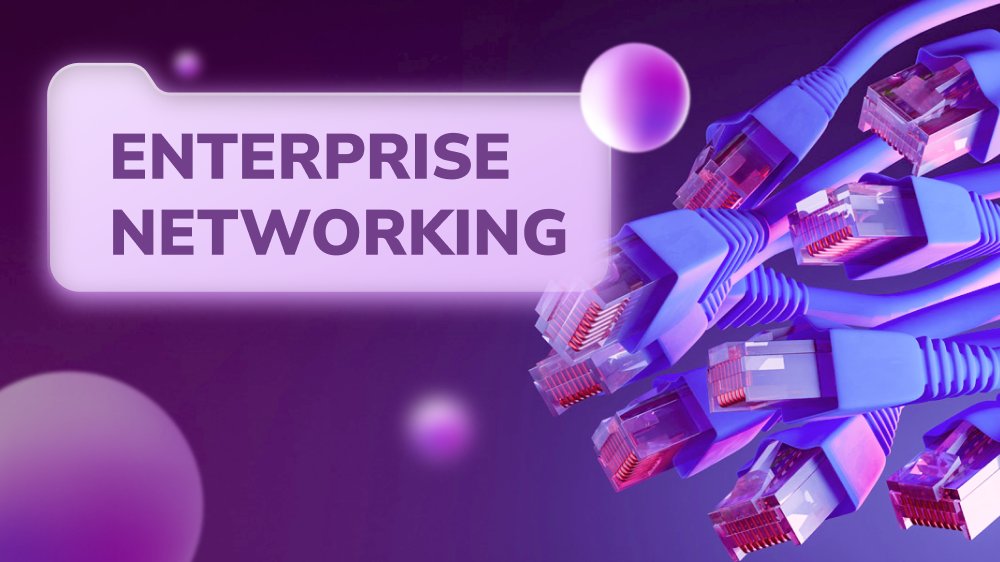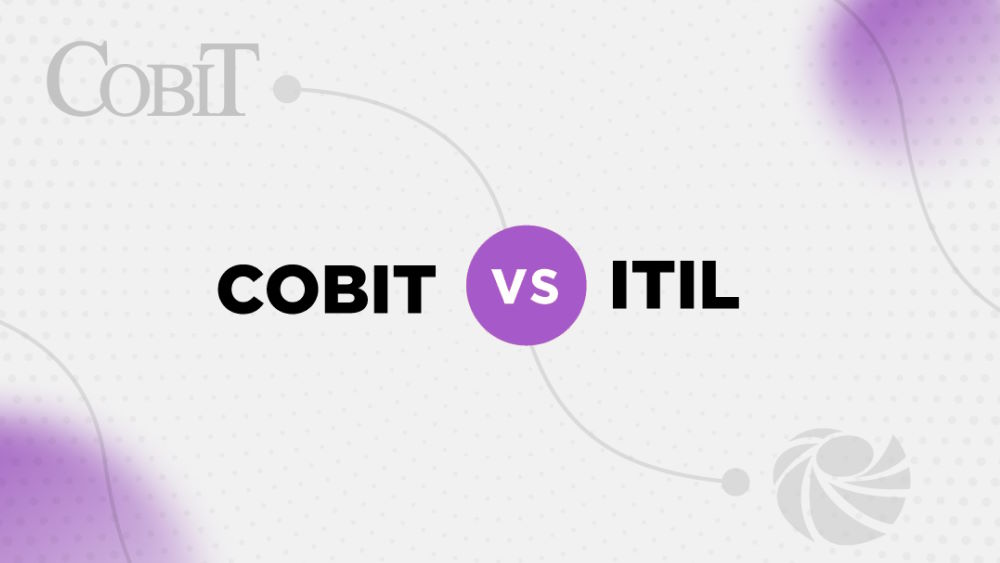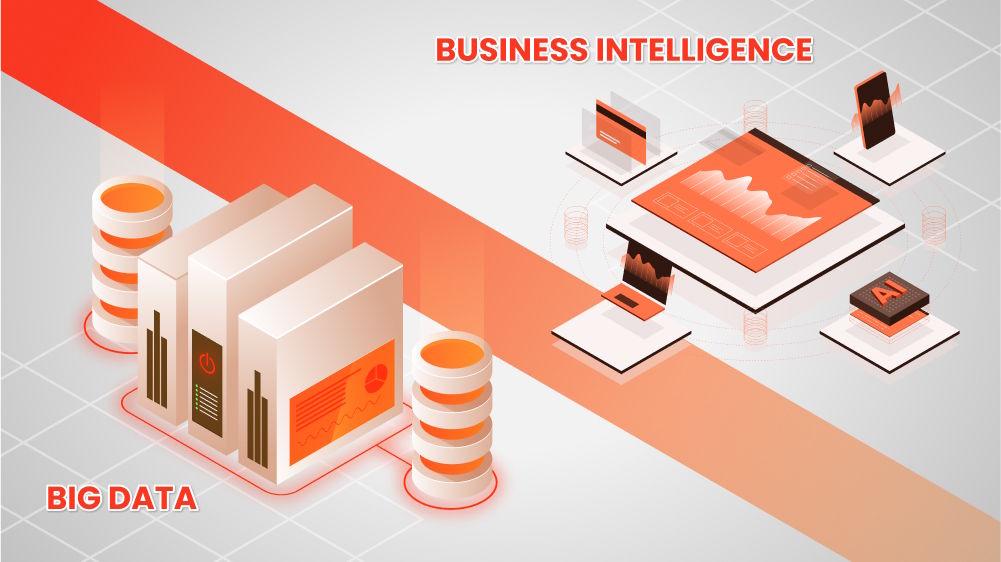
Top Tech Stacks for Software Development: The Line Between Innovation and Overengineering
Choosing a software tech stack balances exciting innovation with the risk of overengineering. Here, we will define overengineering, which flags its costly outcomes (complexity, delays, failure), and outline practical approaches (value-driven decision-making, team expertise, scalability, experimentation) to obtain the optimal balance for successful development.
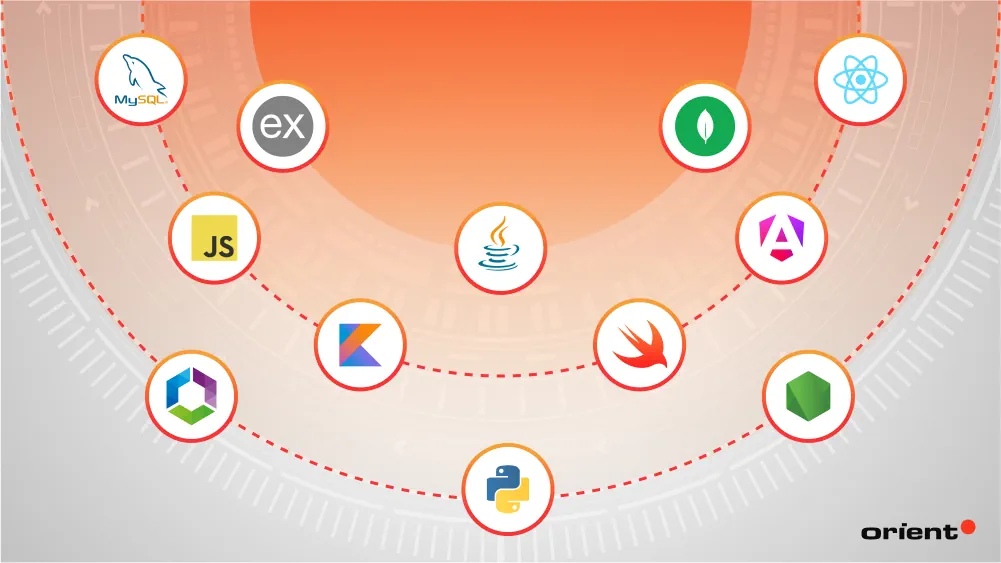
Content Map
More chaptersWe live in times when developers traverse a fast-changing world, as countless cutting-edge technologies begin to offer unprecedented possibilities and smoother development methods. The decision plays a very crucial role in both the current development process and long-term maintainability, scalability, and performance of the software product. According to research, teams are frequently tempted by the promise of cutting-edge technologies, which are claimed to provide unmatched capability and developer happiness.
However, teams should be clear in their outlook on what is required for the project and what can be done by the developers for the projects they endeavor. The chase for nascent or excessively complex technology stacks with no concern for practicality can quickly turn into an overengineered situation that inflates costs, contracts efficiency, and obstructs development workflow.
A recent study uncovers that projects marred with too much complexity experienced, on average, 45% higher development costs and 7% longer timeframes than projects that leveraged more streamlined stacks. Also, studies show that over 40% of developers have had projects tagged as significantly overengineered, with both frustration and low efficiency to boot. This evidence emphasizes the need to make sound tech stack choices that promote innovation, avoiding the excess complexity and perils.
The purpose of this article is to discuss the complex interplay between opportunities to innovate and avoiding the pitfalls of overengineering when choosing tech stacks for software development. We will examine the motives that cause the promotion of innovative tools, identify the early signs of overdesign, and provide tips for choosing tech stacks that have an optimal balance.
What Is a Tech Stack?
The term tech stack refers to the combination of programming languages, frameworks, databases, and software tools used for developing and running an application or system. It comprises a set of organized elements that explain how software is made, functions, and how it connects with both users and other systems.
Essentially, a tech stack consists of two main elements: the frontend (client-side) and the backend (server-side).
- The frontend is responsible for the user interface and experience, determines what users see and do on the screen. HTML, CSS, and JavaScript are the standard front-end tools, and React, Angular, and Vue.js are widely used libraries and frameworks for them.
- The backend allows the application to process logic, work with a database, handle authentication, and link to other services. Backend programming languages, such as Python, Java, Node.js, Ruby, and PHP, are often used together with frameworks, including Django, Spring Boot, Express.js, Rails, and Laravel.
The tech stack also comprises a database system that takes care of managing data. Examples of frequently used databases are MySQL, PostgreSQL, MongoDB, and Firebase. Whether the application calls for conventional relational data storage (with SQL databases) or more flexible and scalable NoSQL databases will determine the database choice.
Additionally, applications rely on hosting and infrastructure services to maintain both availability and performance. You can choose between using in-house servers and cloud services, including AWS, Microsoft Azure, and Google Cloud Platform, for resizable and easily accessible computing resources.
Security is a key element that every tech stack needs. The use of authentication, flexible encryption, and access control methods helps maintain the safety and integrity of the company information. OAuth, JWT (JSON Web Tokens), and SSL/TLS certificates are key to making applications more secure.
How to choose the right tech stack depends on various factors, including project complexity, scalability requirements, developer expertise, and cost considerations.
Most Popular Tech Stack in the Market
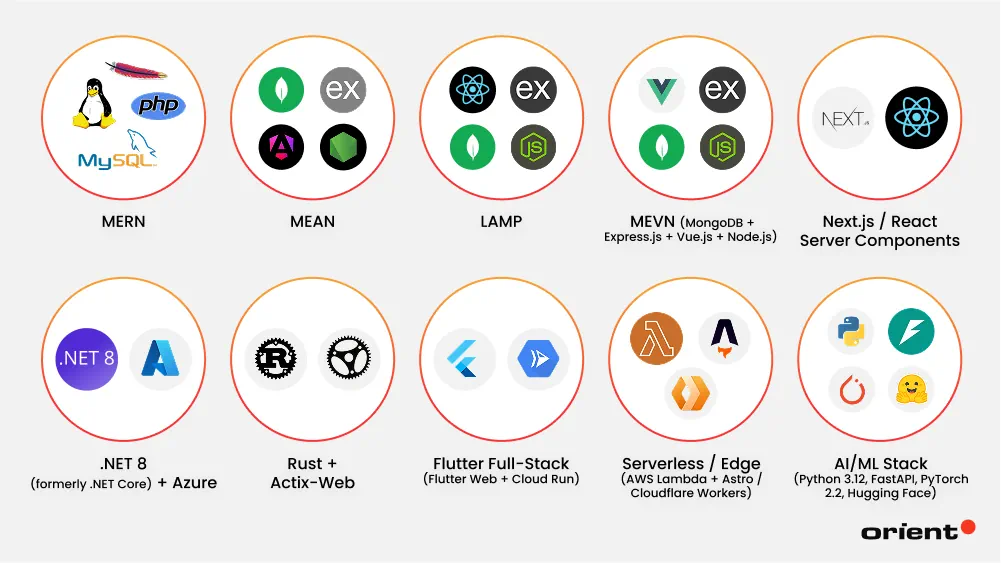
Even though many technology combinations exist, a few stacks have become widely used thanks to their adaptability, strong track records, and support from the community. Listed below are some of the highly used technology stacks influencing modern software development.
MERN / MEAN / LAMP
These three stacks: MERN (MongoDB, Express.js, React, Node.js), MEAN (MongoDB, Express.js, Angular, Node.js), and LAMP (Linux, Apache, MySQL, PHP) have remained cornerstones in web development for a long time.
- MERN & MEAN: Both are built with JavaScript and are suitable for making full-stack web applications. MERN, leveraging React, is commonly adopted for modern single-page web apps, while MEAN, thanks to Angular, is preferred for developing large-scale applications that require well-structured components and strict type checking.
- LAMP: This stack is open-source and is most commonly chosen for developing websites and applications that require high-functioning. The system is built using Linux (OS), Apache (Web Server), MySQL (Database), and PHP (Server-Side Language), which makes it highly robust for content management systems (CMS) and simple web apps.
These stacks remain useful due to the facts that they are mature, reliable and easy to connect with different frameworks and libraries.
MEVN (MongoDB + Express.js + Vue.js + Node.js)
The MEVN stack is an alternative to MERN, and React is replaced by Vue.js, which is known for being both lightweight and powerful. With the arrival of Vue 3, developers enjoy improved performance, thanks to the updated composition API and state management.
Recently, the incorporation of Bun, a fast and efficient JavaScript runtime that outpaces Node.js, has gained popularity among developers using the MEVN stack. Faster package installation, better APIs, and an enhanced development experience are what Bun brings to MEVN, making it a preferred option for developing modern full-stack applications.
The combination of MongoDB (NoSQL database), Express.js (backend framework), Vue.js (frontend framework), and Bun (runtime engine) ensures the development process go at a fast pace, gives a strong performance, and supports communication between the frontend and the backend.
Next.js / React Server Components
Developers now achieve better performance in their React apps thanks to Next.js leveraging server-side rendering (SSR) and React Server Components (RSC).
- Next.js: A React-based framework that utilizes a mix of server-side, static, and dynamic generation methods. It streamlines performance metrics such as SEO, load speed, and interactivity, making it an excellent choice for building modern, high-quality applications at the enterprise level.
- React Server Components: A key advancement that decreases reliance on client-side JavaScript rendering by offloading more computational work to the server, expediting page performance. It is essential for applications requiring immediate response and streamlined fetching of data from remote sources.
This stack has come to be the preferred option for organizations because it guarantees scale, stability, and manageability.
.NET 8 (formerly .NET Core) + Azure
With the recent release of .NET 8, Microsoft’s .NET ecosystem remains the leading choice for building enterprise solutions. Together with Azure, Microsoft’s cloud platform, it offers a complete suite for developing, deploying, and scaling enterprise applications.
- .NET 8: A versatile framework that enables development with C#, F#, and VB.NET, while prioritizing efficiency, security, and cloud-native approaches. This combination is popular among companies for its ongoing support, stability, and compatibility with enterprise environments.
- Azure: A reliable cloud solution with incorporated AI, IoT, serverless architectures, and top-notch security. Azure + .NET powers various cloud applications, enables legacy system modernization, and delivers scalable infrastructure options.
With backing from Fortune 500 companies, government agencies, and financial institutions, this stack ensures corporate-level security, compliance, and long-term viability.
Rust + Actix-Web
Thanks to its memory safety and excellent performance, Rust is becoming increasingly important in microservices backend development. When combined with Actix-Web, an asynchronous tool for handling HTTP requests efficiently, Rust helps create APIs and services with very low latency.
- Actix-Web is efficient in real-time processing which means it can take on a large number of concurrent requests without performance bottlenecks.
- Rust’s memory management approach prevents usual runtime problems, so it is a good choice for creating safe and robust APIs.
- Rust + Actix-Web is an effective and secure option for the backend when using modern cloud infrastructure over traditional Node.js and Python solutions.
The use of this stack in financial services, gaming and high-speed distributed systems makes it suitable for applications that must provide sub-millisecond answers.
Flutter Full-Stack (Flutter Web + Cloud Run)
Originally, Flutter was used only for mobile development, but it has now added Flutter Web and Google Cloud Run to cover full-stack needs. Developers can build applications that run across mobile, web, and desktop without rewriting code using this stack.
- Since Flutter Web supports Dart, programmers can build interactive, responsive applications using just one codebase, which saves both time and money.
- With Cloud Run, developers can run their applications efficiently since the platform automatically handles extra traffic by scaling the resources.
- Using Flutter full-stack is ideal for new companies, e-commerce sites, and software-as-a-service applications, as it guarantees the same look on different devices without special native features.
This stack ensures developers can handle different platforms easily, with the best efficiency and flexibility possible.
Serverless / Edge (AWS Lambda + Astro / Cloudflare Workers)
Thanks to serverless technology, cloud computing now works more quickly and is more cost-efficient than before. With AWS Lambda and Cloudflare Workers at the forefront, serverless edge computing helps applications speed up by eliminating lengthy cold-start periods.
- AWS Lambda handles event-driven functions, so developers can create code without managing any resources. After the 2025 optimizations, significant progress has been made in fixing cold-start problems, so Lambda is perfect for handling time-sensitive tasks.
- Astro, focused on performance-first SSR, helps websites offer both static and interactive features, which leads to a better user experience.
- Cloudflare Workers, running at edge locations, improves global response times, reducing latency for users across different regions.
The stack is often found in content delivery, web applications, API gateways and AI-powered workflows, thanks to its ability to scale up instantly and use edge computing advantages.
AI/ML Stack (Python 3.12, FastAPI, PyTorch 2.2, Hugging Face)
There has been a rise in using AI and machine learning across different fields which has resulted in building specialized stacks for deep learning, natural language processing (NLP), and computer vision.
- Python 3.12 helps speed up code performance and makes type hinting more robust.
- FastAPI helps by providing quick responses for asynchronous API calls necessary for deploying ML models.
- Thanks to GPU optimization in PyTorch 2.2, deep learning models can now be trained and inferred using large data efficiently.
- By using Hugging Face as a hub for ready-made models, developers can quickly work with the latest AI technology without having to prepare a lot of infrastructure.
This AI-focused tech stack is commonly found in computer vision, autonomous systems, and AI-driven data analysis, since its GPU speed and scalable cloud support make development more effective.
Understanding Overengineering in Tech Stacks
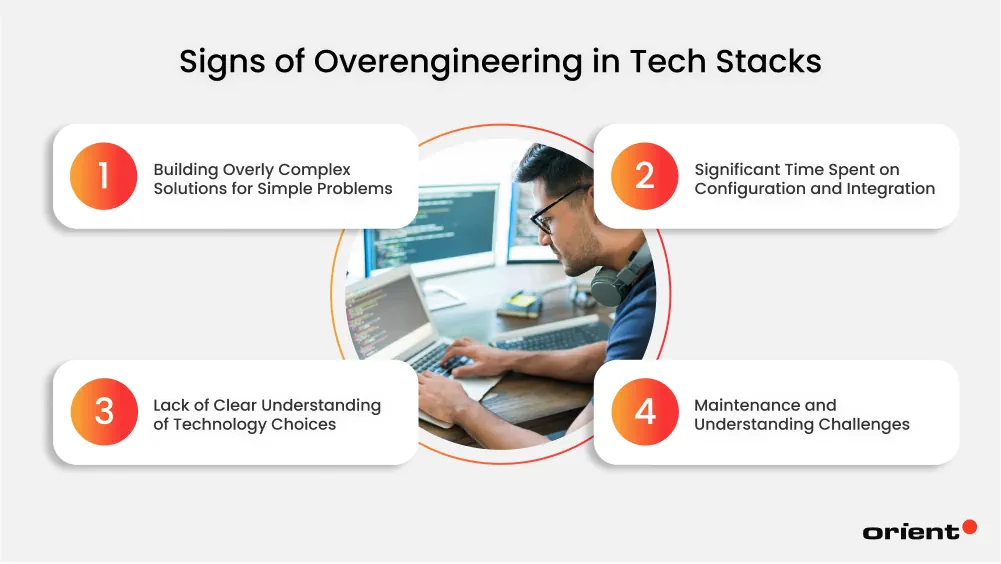
While tech stacks bring powerful capabilities, there is a risk of overengineering.
Overengineering occurs when a technology stack has too many unnecessary components that complicate development and maintenance without significantly improving performance, scalability, or functionality. It typically occurs due to exaggerating future needs, using newfangled tools before they are really needed, or using solutions that exceed the problem’s actual demands.
A typical example of overengineering is using AI-driven automation on an activity that can be managed by a simple script. The primary issue is that complexity must always be worth the expense, implementation time, and maintenance time in the long run.
Recognition of signs of possible overengineering at an early stage of the technology selection process is necessary to avoid its negative consequences. There are certain signs that may suggest that a chosen tech stack is leaning towards excessive complexity:
Building Overly Complex Solutions for Simple Problems
One of the most telling signs of overengineering is employing sophisticated technology or design patterns to solve problems that could be addressed with much simpler solutions. A prime example is adopting a microservices architecture for a small application with limited features and a minuscule development team.
Likewise, adopting a highly complex NoSQL database with sophisticated querying capabilities for an application with basic key-value store requirements brings in unnecessary learning curves, configuration complexities, and bottlenecks in performance if not utilized appropriately. The emphasis always needs to be on picking the simplest tool that suitably addresses the given problem at hand and increasing complexity only when the scale and needs of the application truly call for it.
Significant Time Spent on Configuration and Integration
The second indication is excessive time and labor devoted to configuring and integrating the chosen technologies versus writing the actual application functionality. If the development team is spending a lot of their time wrestling with deep configuration files, working out compatibility between incompatible components, or building custom integration layers between technologies that do not exist well together naturally, then it could be a sign of an overengineered stack.
For example, the selection of the most bleeding-edge but immature technologies with poor documentation and community support can come with significant overheads in creating a good development environment and ensuring seamless interoperability. The ideal tech stack should offer an acceptable level of out-of-the-box compatibility and thoroughly documented integration patterns such that the team can focus on business value delivery rather than becoming system integrators.
Lack of Clear Understanding of Technology Choices
A foreboding sign of overengineering is when the development team has no clear and certain idea of how each chosen technology will contribute to achieving the specific project objectives directly. When features are added to the stack simply because they are “industry best practices” or “might prove useful someday” with no clear use case in the context of the current project requirements, it means decision-making on a specific target is lacking. Each technology should be able to define a specific purpose and open reason for inclusion, working to fulfill a specific functional or non-functional requirement directly.
For example, deploying a complex message queueing system in the absence of a demonstrated need for decoupling services or asynchronous task execution increases unnecessary complexity and operational overhead. A well-informed tech stack is one wherein thoughtful decisions are made such that each technology exists with a necessary and clean-cut purpose to application architecture and functionality.
Maintenance and Understanding Challenges
Perhaps the strongest indicator of an overengineered tech stack is when the development team struggles to effectively maintain, debug, and extend the application due to the unfamiliarity and intricacy of the underlying technologies. If there is a steep learning curve for tools chosen, documentation is not good, or the team lacks expertise, this can lead to severe delays in development, a high likelihood of introducing bugs, and issues in troubleshooting.
Using too many new or specialized technologies simultaneously could overwhelm the team and leave no single person in control of the entire stack. A pragmatic solution prefers technologies that the team is already familiar with or can easily learn over the project lifecycle, keeping ease of maintenance accessible and staying away from knowledge silos and development bottlenecks.
The Consequences of Overengineering
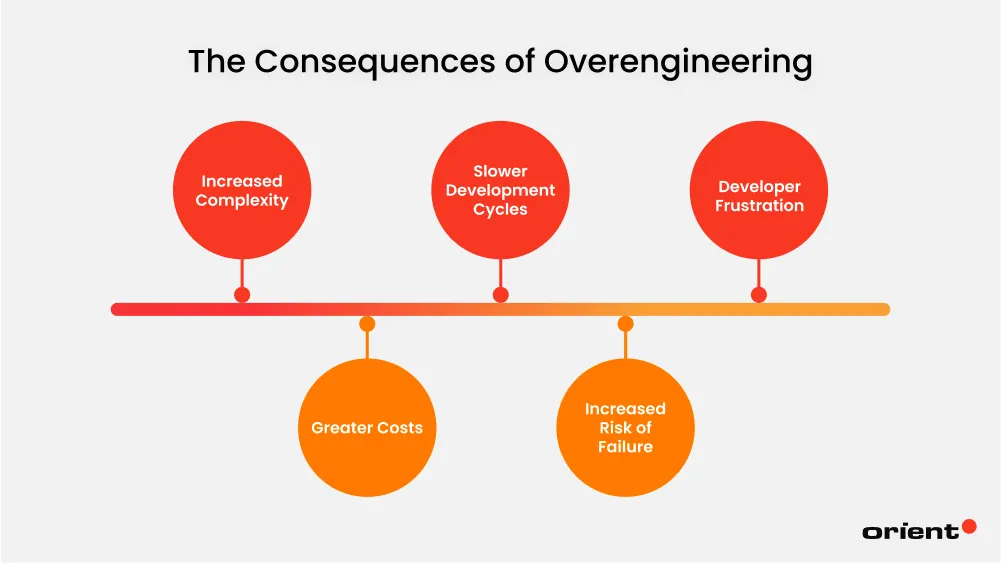
Overengineering a tech stack can cause catastrophic consequences for a software project, affecting the timeline, budget, product quality, and team morale.
Increased Complexity: Too many technologies lead to systems that are harder to understand, maintain, and expand. Every added feature contributes more configurations, dependencies, and points of failure. It can turn a straightforward application into a complex web, making it hard to understand the architecture or trace data flow. Debugging becomes harder, and maintaining these systems takes more effort in terms of updates and compatibility, putting a much heavier cognitive burden on the team.
Greater Costs: Overengineering specifically adds to project costs. Increased learning and implementation time for complex, unnecessary technologies add to labor costs. Intricate architectures tend to need more expensive infrastructure, like several servers or specialized databases, with more licensing fees or operational overhead. The need for skilled personnel to run niche or complex technologies adds to salary costs. All these amount to a much higher cost of ownership.
Slower Development Cycles: Over-engineering is a key inhibitor to development speed and responsiveness. It does not take long to roll out new features or make adjustments. Developers are busy working through the intricate setup and preventing new changes from introducing unforeseen side effects. This causes more prolonged testing cycles and incessant delays in releasing features, which is very negative to the team’s response speed in accommodating changes in the market and delivering value.
Increased Risk of Failure: Systems that are too complicated are more likely to be buggy and have integration issues. Every additional technology introduces another point of failure. The more interaction, the higher the risk of incorrect behavior and hard-to-debug errors. Merging heterogeneous technologies can introduce lurking, intermittent bugs that are hard to reproduce and fix. This higher risk of failure can cause unstable applications, poor user experience, and ultimately, jeopardize the project’s success.
Developer Frustration: Battling with overly complex technologies completely drains developer morale and productivity. Continuously fighting with complicated configurations, arcane errors, and the feeling of being overwhelmed by complexity leads to demotivation and frustration. This can lead to excessive developer turnover, which in turn brings even more project slowdowns and more costly hiring. A well-chosen, pragmatic technology stack leads to a more engaged, productive, and higher-quality development environment, while overengineering leads to burnout and a poisonous culture.
Finding the Fine Line: Balancing Innovation and Pragmatism
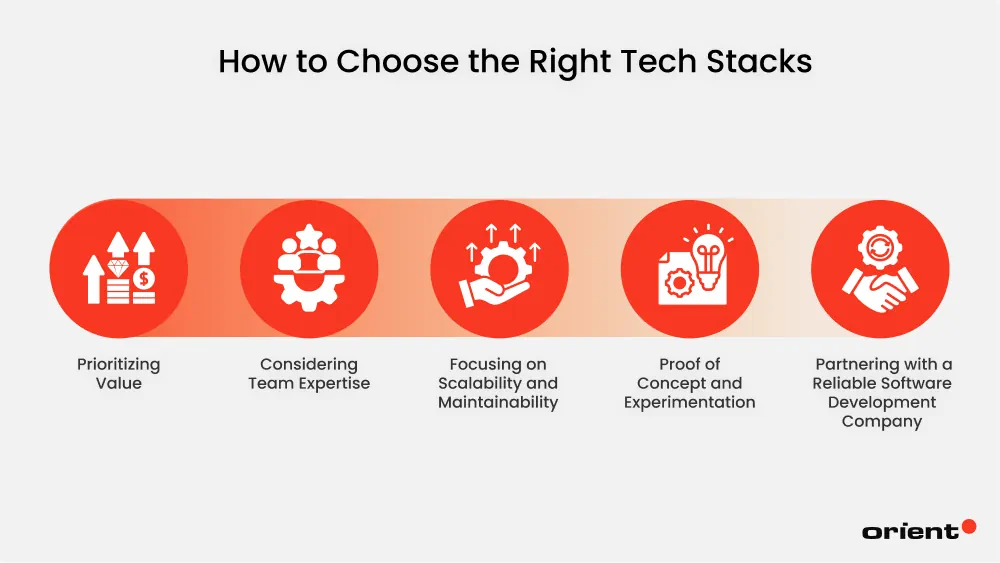
The art of selecting an optimal tech stack is in wisely achieving the middle ground between being open to valuable innovation and remaining pragmatic decisions that ensure the success of projects.
Prioritizing Value
Innovation must serve a purpose beyond novelty. When selecting a tech stack, the decision-makers should focus on tools that deliver measurable benefits and not ones that were chosen because they are trendy or popular. The usefulness of technology depends on if it can enhance productivity, user experience, or performance or reduce operational costs.
For instance, adopting a microservices architecture might be beneficial in an extensive distributed system that requires scalability, but is more than a simple application where a monolithic approach would make it easier to develop and maintain. Similarly, AI-powered automation is only feasible when sophisticated data patterns are being handled; otherwise, rule-based systems would be more effective. The trick is to determine the technology needs from the real challenges that exist and make sure that each layer in the stack gives a distinct edge.
Considering Team Expertise
One of the most important factors in technology selection is the experience of the development team. While the new frameworks and languages will probably possess more capabilities, they should not be employed at the expense of efficiency and continuity of workflow. The learning process can take many months to drive development forward and to accumulate technical debt if there is no experience in a given technology.
For example, applying Rust to backend development in a team dominated by Node.js or Python could lead to longer ramp-up times, more difficult debugging, and a greater likelihood of suboptimal solutions. Additionally, switching to a new cloud provider with no initial experience of its ecosystem can lead to integration problems and security misconfiguration. The answer is leveraging existing skill sets while selectively introducing new technology that enhances the skill set but does not upset it.
Focusing on Scalability and Maintainability
Being the innovation for growth, all technical choices must consider long-term viability in terms of scalability and maintainability. Scalability ensures systems are able to handle increasing workloads efficiently, and maintainability allows groups to modify, correct, and tweak software without unnecessary overhead. A best stack must avoid depending on recurring revision or specialized expertise to keep it running.
For instance, employing Kubernetes for container orchestration may be ideal for big companies that have complex deployments, but would be overkill for small applications that would also perform just fine with less complex Docker setups. Likewise, employing a specialized frontend framework that has minimal community input can make future upgrades difficult, as it is difficult to find resources and experienced developers at a later date. Sustainable tech stacks prioritize flexibility and agility so that they grow along with the project and don’t constrain the scope of future development.
Proof of Concept and Experimentation
To mitigate risk in new technology adoption, organizations must experiment with proof-of-concept (PoC) deployments before fully committing to a stack. A trial run in a controlled setting enables teams to test the actual performance, compatibility, and viability of a new tool in a real-world setting without risking active development.
For example, before transferring an entire infrastructure to serverless computing, running a small workload on AWS Lambda can show its weaknesses and strengths. Similarly, testing React Server Components on a section of a web application ensures the framework meets performance requirements before being employed for all front-end development. By testing technologies on small scales, teams are confident in their advantages while identifying early on potential downfalls, reducing costly mistakes in full implementation.
Orient Software Offers Strategic and Pragmatic Technology Adoption
Finding the ideal equilibrium of innovation and pragmatism requires a strategic approach that ensures technology choices align with business objectives, team skill sets, and future business growth requirements. Companies looking to maximize efficiency and minimize risks should endeavor to work with experienced software development experts who specialize in aligning tech stacks with real-world needs.
Partnering with a reliable software development company like Orient Software can be of immense help. We provide end-to-end solutions with scalability, maintainability, and performance in mind, leading organizations away from unnecessary complexity and toward the best technology for their specific use case. Our experience with dissecting project requirements, evaluating technology options, and crafting solid and extensible solutions can help you make intelligent choices, avoid overengineering pitfalls, and build software that will not only meet your current needs but also be set up for future success and expansion as well. With a thoughtful and value-driven approach, you can harness the power of innovation without succumbing to the complexities of over-sophistication.


